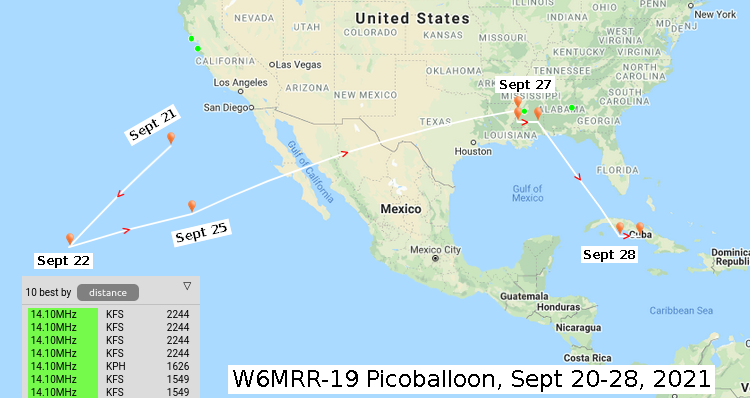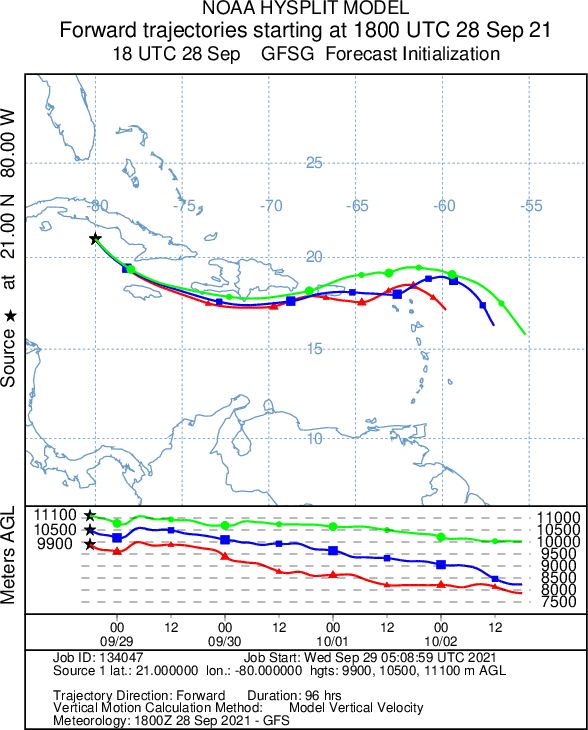We launched again on Monday, September 20th, 2021, from our usual spot in the Berkeley Marina. The launch party was Martin W6MRR and Robert K6RGG, and the launch time was a bit later than usual at 11:30am Pacific time (1830 UTC). The picoballoon did not wake up on launch day. After our previous halfway around the world picoballoon, we were a bit dismayed to have another failed launch.

But the following day it woke up! The picoballoon was meandering out in the Pacific Ocean in gridsquare CL79, somewhere between 9,900 and 11,100 meters (32.5k to 36.5k feet). While this is higher than most of our previous picoballoons, our ideal altitude is above 11,100 meters, which is higher than most bad weather but still in the jetstream.
Something was definitely wrong with the tracker, because on Tuesday Sept 21st we only received a total of 7 packets from KFS and KPH (pdf). These two stations have have huge antennas right on the California coast near San Francisco, with excellent receivers. I ran a Hysplit prediction, and it showed that the balloon would keep heading south west for a few more days before heading back east towards Mexico.
The balloon was silent on September 23 and 24. I guess the 20m propagation out in the Pacific Ocean wasn't good during those days, or maybe the tracker didn't wake up. In any event, this tracker was having problems.
The picoballoon came back alive on September 25th, then again on September 27th when it was floating over Louisiana. On September 28th, it was over Cuba, and a Hysplit forecast from September 28th showed that it was heading for the British Virgin Islands.

Unfortunately, September 28th was the last day we received any packets from this picoballoon, when it was floating over Cuba.
I don't quite know why we received so few packets from this tracker. A total of 23 WSPR packets were received by stations in California and the southern US. The average SNR (in 2500 Hz receiver bandwidth) of these WSPR packets was -22 dB. While this seems like a very low SNR value, the lower limit of decoding for WSPR is about -30 dB (pdf), so -22 dB provides some margin for receiving stations that don't have great antennas. The average of the previous picoballoon was around -18 dB, which is similar to this flight.
One possible explanation is the different antenna wire (pdf) on this launch. The new antenna wire only weighed 2 grams, which helped us get a bit higher than previous launches. However, this wire had 200 ohms of DC resistance, which means it was not a particularly efficient antenna. But given the relatively strong SNR of the packets received, I would think that other stations nearby would have also received our balloon.
Other problems that might have been a factor include very poor 20 meter band propagation during this period, or the GPS interference problem showed up again. We shall never know.
Download all WSPR packets here.